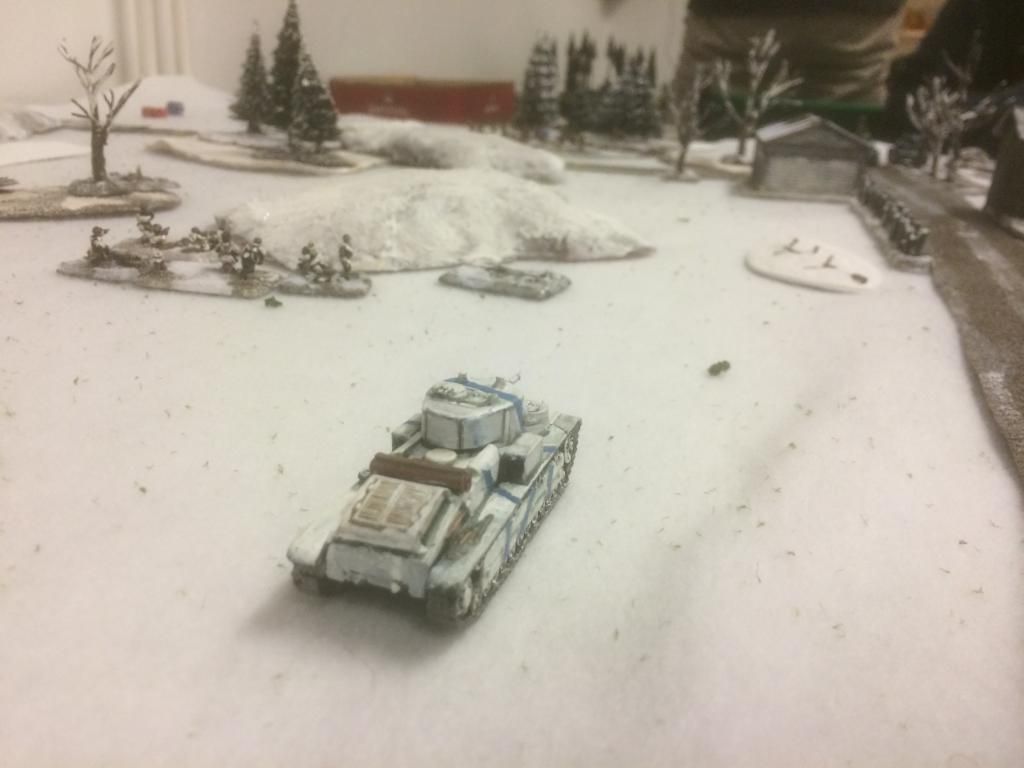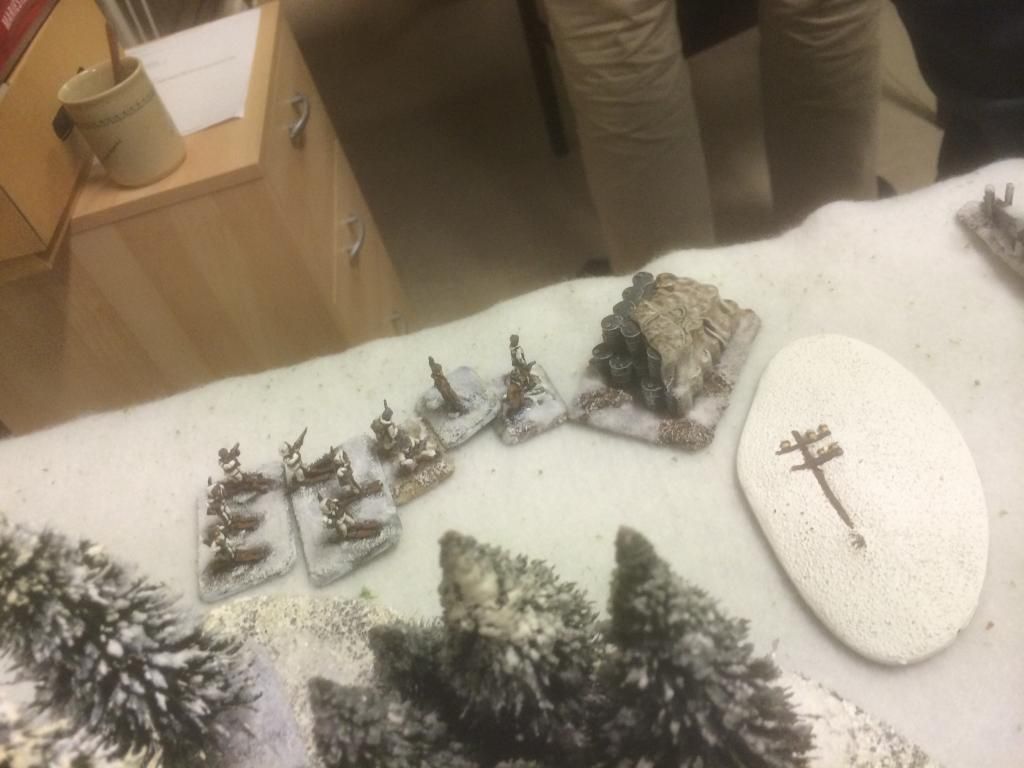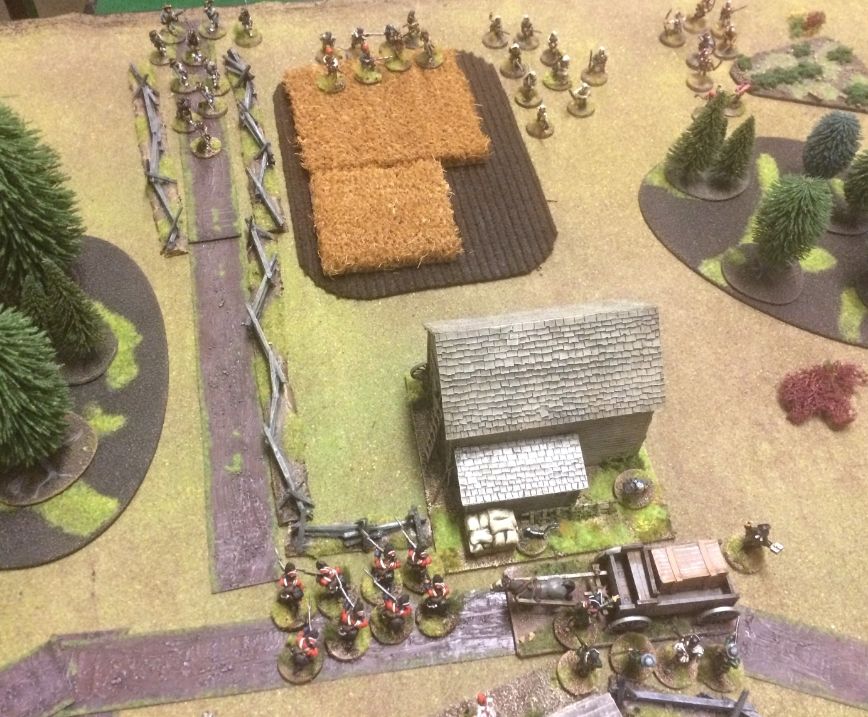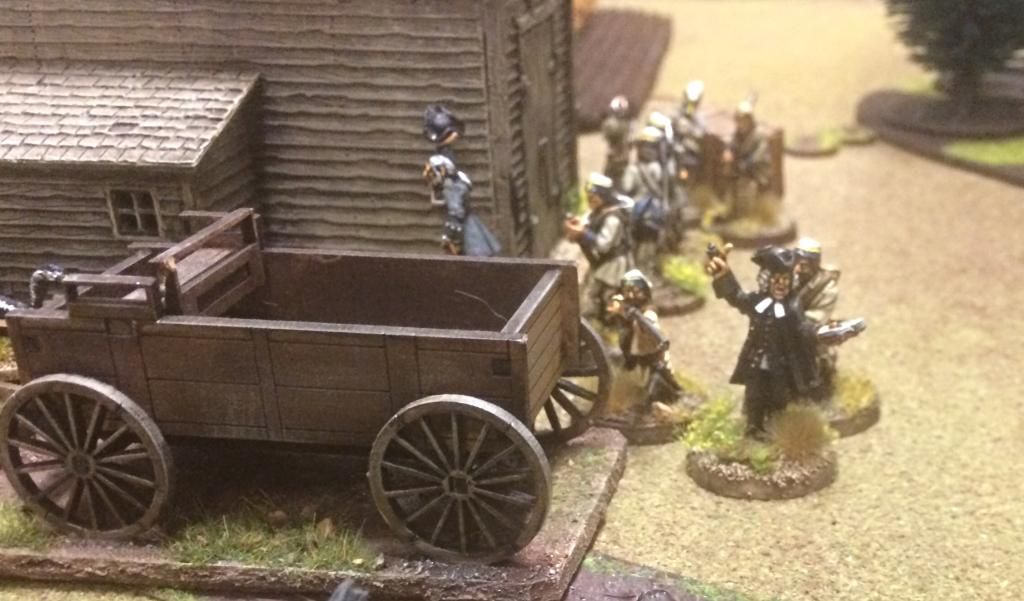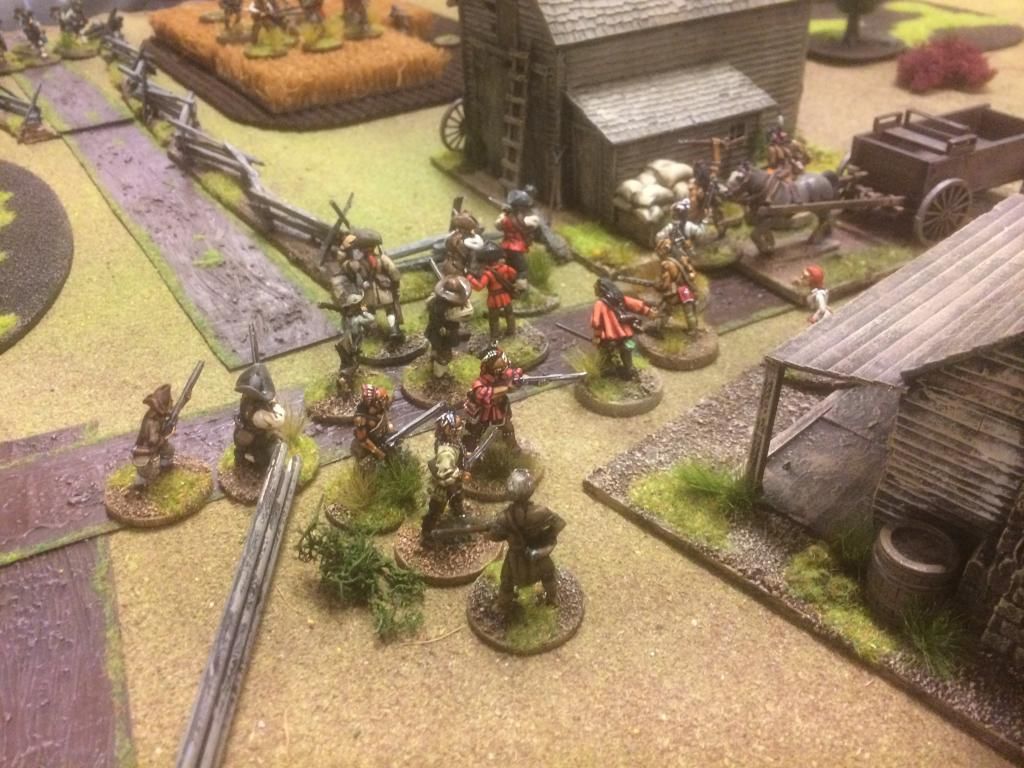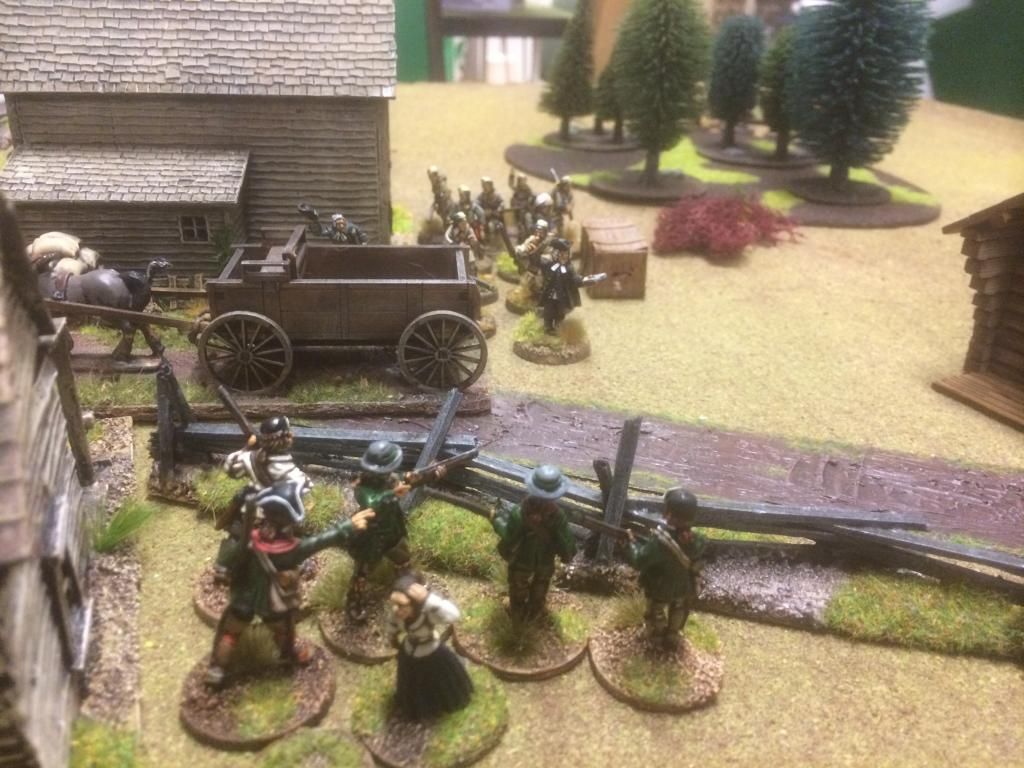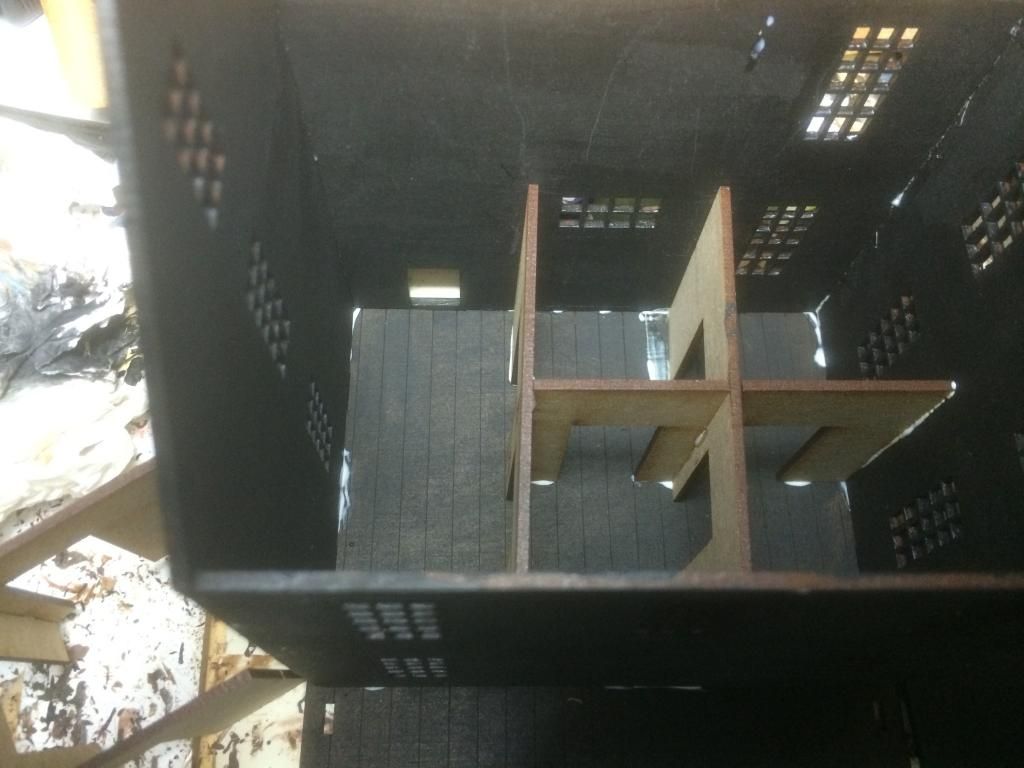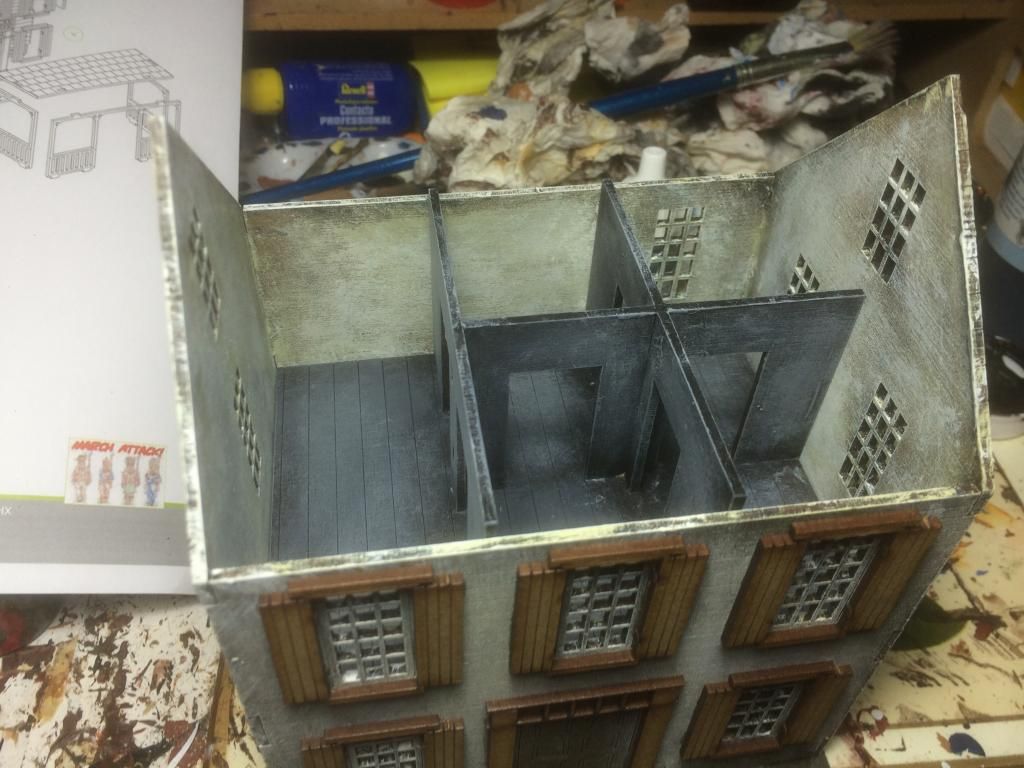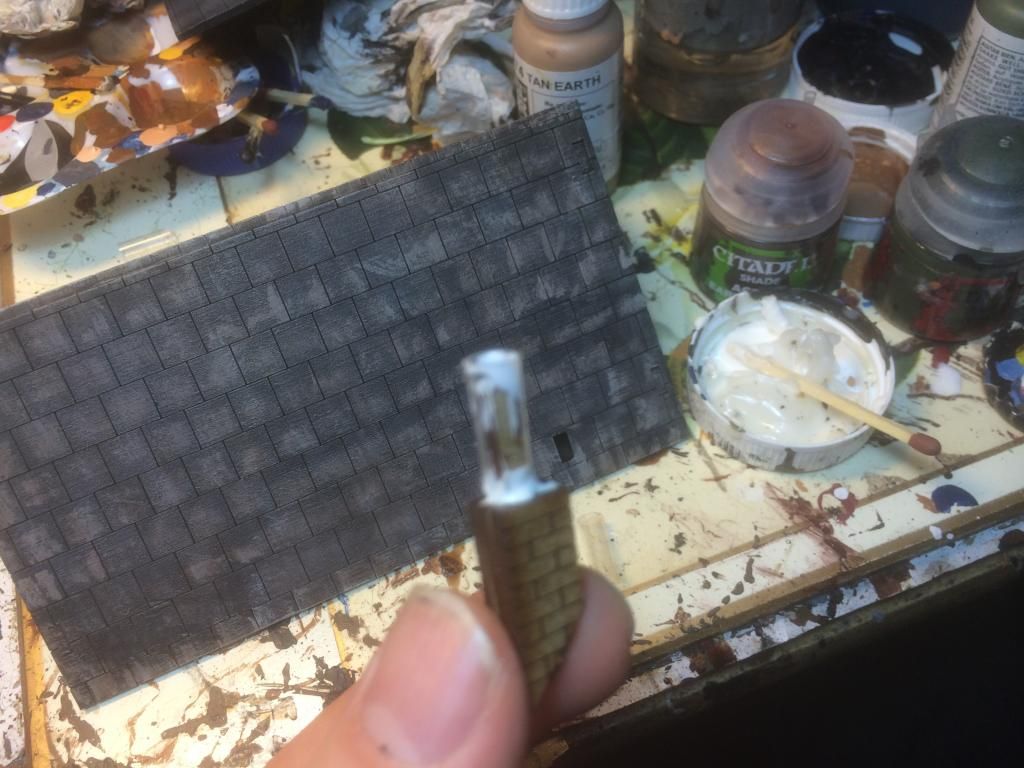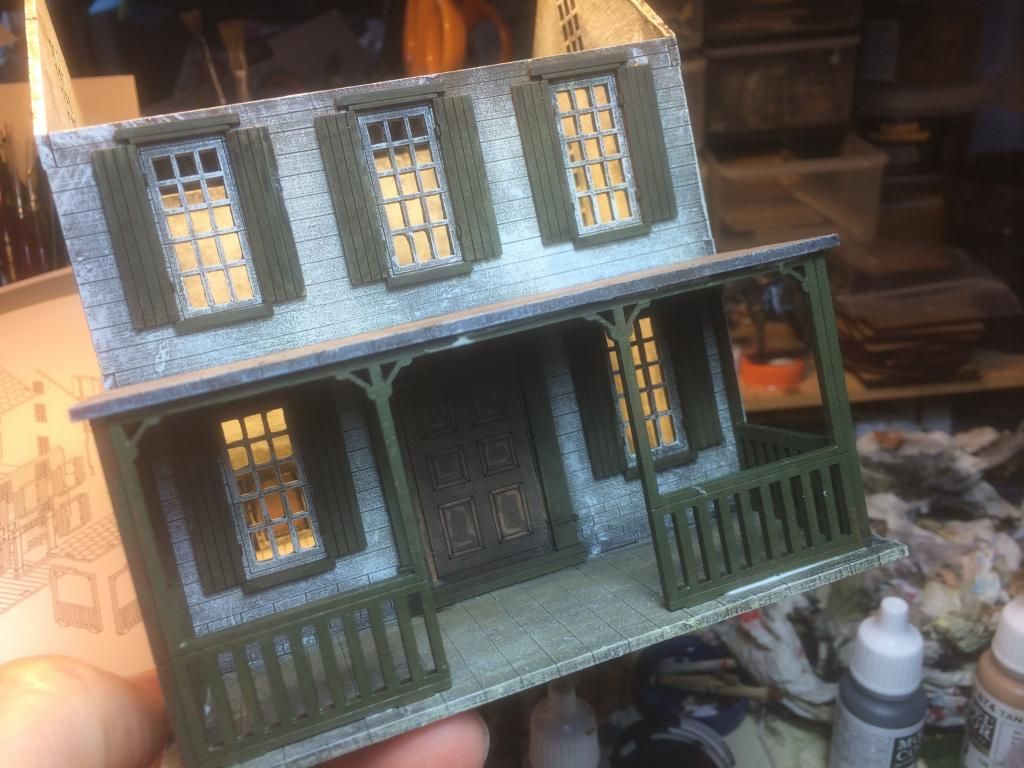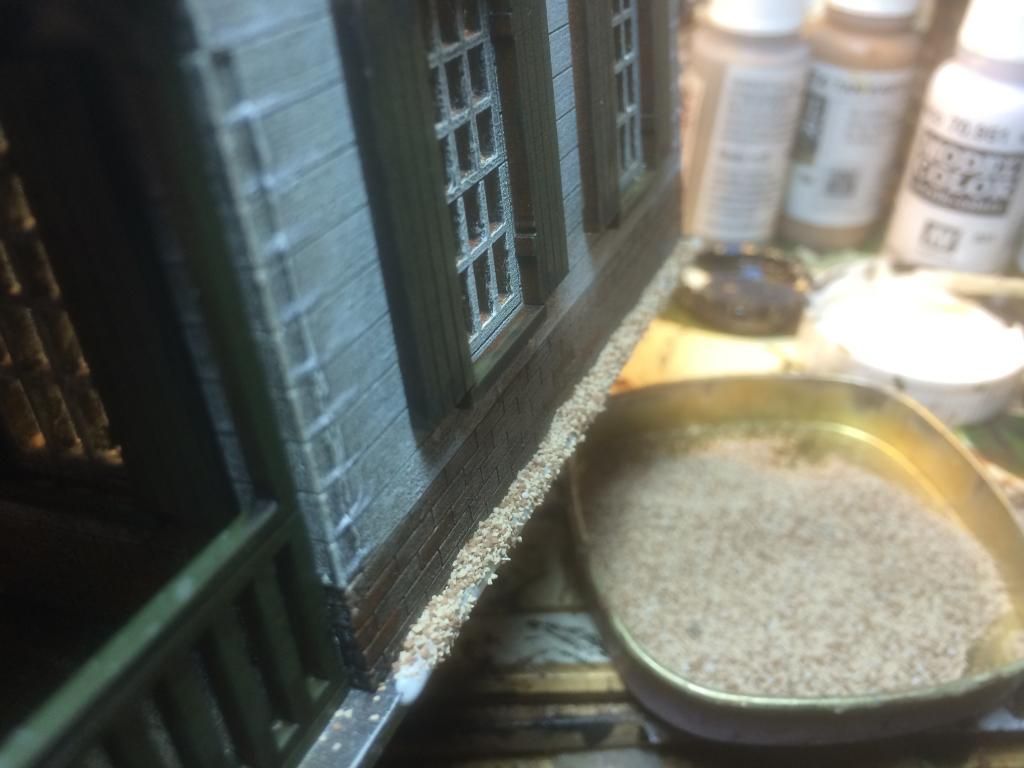A Finnish T-28 somewhere in Carelia 1941
Chain of Command is a very good set of rules. We have played it ever since it Camel out. Still it
offers something new each game. The latent thing we( that's Ulf/Tabletop gamer and me)have picked up is Big Chain of Command. It's a version that allors the player to field a Tank Platoon besked the usual infantry Platoon. The game is originally based around an infantry Platoon. The size of it all is roughly thesame as a game of Bolt Action, though the rules are rather different. Chain of Command starts with a pre-game where the two sides jockey for positions before the. Realbattle beginns. When the real game beginns the twoforces are usually quite close to each other. That cuts down the too often rather tedious maneuvering before first fire.
This game is set in Carelia during these called Continuation War. Finland and Soviet Union fought each other in a side theater between 1941 and 1944. It was in part a consequence of the Winter war between the two countries in 1939-1940.
Some background history
The Winter War was a result of the Molotov-Ribbentrop pact between Soviet and Nazi- Germany. Hitler and Stalin had divided between each other. Finland was supposed to end up in Soviet hands. Finland fought bravely and kept it's independance after a massive Soviet onslaught during the Winter
War. When the war was over significant parts of Finland was handed over to Soviet Union.
War. When the war was over significant parts of Finland was handed over to Soviet Union.
When Germany and Soviet became enemies after Operation Barbarossa Finland saw an opportunity to regin what lost. It was not a wide move. In the end it prologed the suffering of the Finnish people
and the country gained nothing. However in the opening moves of this war it looked as if Finland not only would regain Lost territory, it would also conquer new territory in the part of Carelia that
previously was part of Soviet Union.
This game is fought during the winter of 1941. The Finns had taken most of Soviet Carelia. The
frontline was locked somewhere along the River Svir.
and the country gained nothing. However in the opening moves of this war it looked as if Finland not only would regain Lost territory, it would also conquer new territory in the part of Carelia that
previously was part of Soviet Union.
This game is fought during the winter of 1941. The Finns had taken most of Soviet Carelia. The
frontline was locked somewhere along the River Svir.
The main diffrence between the Winter War and the Continution War was the fact that the Finns had Tanks in this war. The main supplier of tanks to theFinnish armywas the Soviet army. Finland had
taken them as warbooty during the Winterwar and during the opening moves of the Continuation
War. Below you can see a Finnish T-28 opening fire upon the enemy ahead.
taken them as warbooty during the Winterwar and during the opening moves of the Continuation
War. Below you can see a Finnish T-28 opening fire upon the enemy ahead.
The Scenario
The game is played with 15mm miniatures on multibases. The distances are the original ones. The game is intended for 20-28mm single based miniatures. We found out quite early one that the distances made more sense in 15mm an thus we have kept it all in this scale.
In this scenario the two sides face each other near a crossroad there are some farmsteds and houses
nearby. Both sides have an Infantry platoon and a tank platoon each. The Finnish tank platoon
consist of two T-28 and Two BT-7. This is a configuration that the Finns had until November 1941. In
addition to the standard platoon unit has an additional asset - a BA-10 armoured car.
addition to the standard platoon unit has an additional asset - a BA-10 armoured car.
The opening moves of the Finns
The Russians hides in the woods
An attempt to support the Finnish advance with a T-28
The Russian tanks advances into the village...
The Soviets have four T-28. It is a significantly stronger unit compares to the Finnish one when it comes to firepower, but the T-28 is slow.As for infantry it is similair situation. The Finns have fewer men and less firepower, but have greater mobility. In a game like Chain of Command greater mobility means that a smaller mobile unit might gain greater firepower locally by conscentrating firepower at the enemy's week spot. It is not a game of basic attrition. That is way too common when it comes to other WWII-rules.
Since this a scenario set in a winter landscape this narrows down the time frame. It has to be November 1941( and yes by this time it was winter in Carelia in 1941).
In the opening moves both sides advances with their tanks towards the center of the village. The finns halts first. The basic idea is to choke the Russian advance. If the Russians have to fees their tanks piecemeal through the village their T-28 might loose their Firepower superiority( they be stuck in a road traffic queue instead). This seemsto be successful at first. The Russians and the Finnish tanks
trade off in a stand still fire fight.
In the meantime the Finns advance on both flanks. The right Flank is soon halted ny the greater
trade off in a stand still fire fight.
In the meantime the Finns advance on both flanks. The right Flank is soon halted ny the greater
Firepower of the Soviets. The Finns takes cover in the woods.
The left flank if the Finns advances , but are stopped by a single Russian squad - a head on attack in the open against an enemy is a generally bad idea in this game.
The stalemate is broken when the Russian tanks manage to supress the Finnish T-28s. At the same time the Finns fail to move their ligher armour into a position where they can support the infantry.
The tiny BA-10 is brown to pieces by the Russian T-28
The fire fight on the left flank
The Finns knocks out a T-28
The Finn T-28 finally recovers. At the same time the Russian lead tank moves into a trap. In a nearby house hides two finnish squads with satchel charges and molotov cocktails. The Russian lead tank is knocked out. At roughly the same time the Finns on the left flank breaks through. The Russian squad blockning their way is routed, the Finns captures the Russian jump - off point(that's a real loss in this game). The Russian morale eventually breaks and the game enda with a Finnish victory.
The final moves of the game. The Russian jump-off point is seized by Finns



